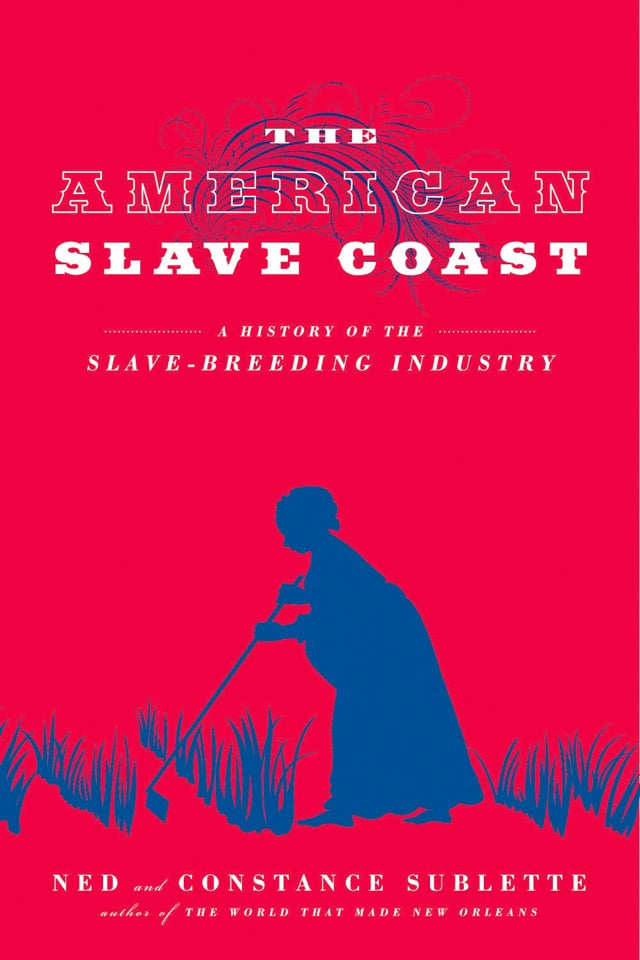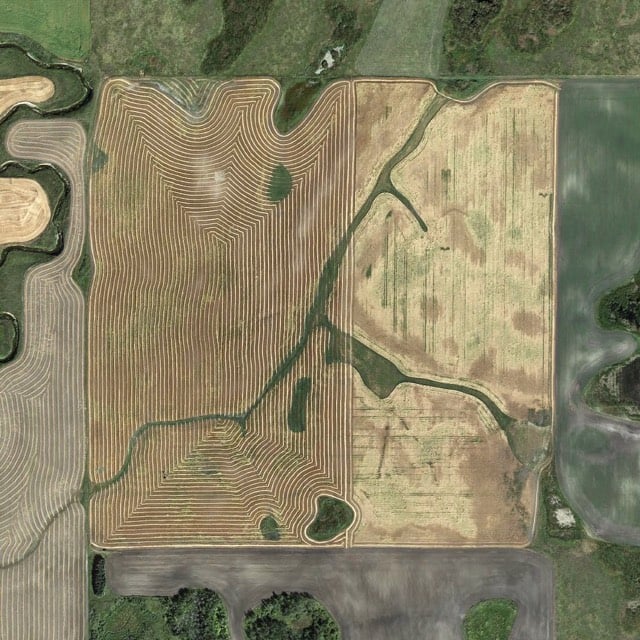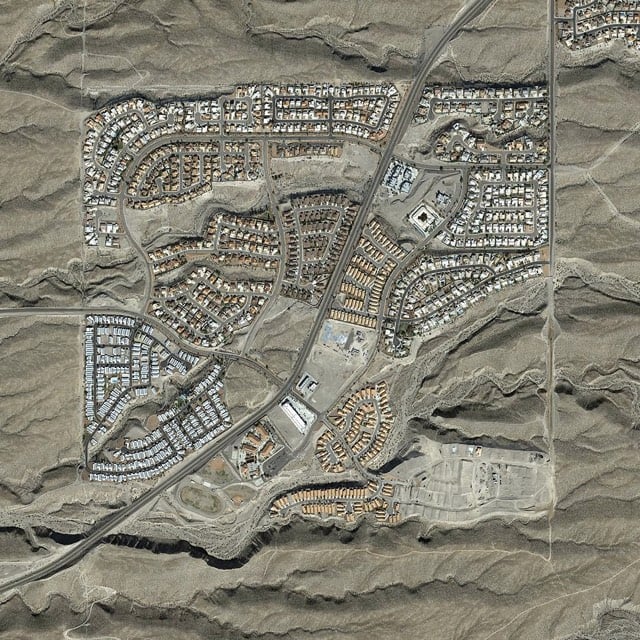
For his Descendents series, Drew Gardner takes photographs of people done up to look like their famous ancestors. The Smithsonian Magazine recently featured Gardner’s photo of Shannon LaNier recreating a portrait of his great-great-great-great-great-great-grandfather, Thomas Jefferson. Here’s the description of Jefferson’s portrait on the White House website:
The portrait of Jefferson was completed in Philadelphia before mid-May 1800 when he left that capital for Monticello. The face has the glow of health, a warm complexion. The sitter here looks directly at us and does so with candor, as our equal. The splendid eyes and mouth convey reason and tolerance.
At odds with that glowing description is LaNier’s very existence; he’s here today because Thomas Jefferson raped his great-great-great-great-great-great-grandmother Sally Hemings. Says LaNier of Jefferson:
He was a brilliant man who preached equality, but he didn’t practice it. He owned people. And now I’m here because of it.
Check out this video for a look at how the portrait was made and more of LaNier’s thoughts about it. (via open culture)

The American Slave Coast: A History of the Slave-Breeding Industry by Ned & Constance Sublette is a book which offers an alternate view of slavery in the United States. Instead of treating slavery as a source of unpaid labor, as it is typically understood, they focus on the ownership aspect: people as property, merchandise, collateral, and capital. From a review of the book at Pacific Standard:
In fact, most American slaves were not kidnapped on another continent. Though over 12.7 million Africans were forced onto ships to the Western hemisphere, estimates only have 400,000-500,000 landing in present-day America. How then to account for the four million black slaves who were tilling fields in 1860? “The South,” the Sublettes write, “did not only produce tobacco, rice, sugar, and cotton as commodities for sale; it produced people.” Slavers called slave-breeding “natural increase,” but there was nothing natural about producing slaves; it took scientific management. Thomas Jefferson bragged to George Washington that the birth of black children was increasing Virginia’s capital stock by four percent annually.
Here is how the American slave-breeding industry worked, according to the Sublettes: Some states (most importantly Virginia) produced slaves as their main domestic crop. The price of slaves was anchored by industry in other states that consumed slaves in the production of rice and sugar, and constant territorial expansion. As long as the slave power continued to grow, breeders could literally bank on future demand and increasing prices. That made slaves not just a commodity, but the closest thing to money that white breeders had. It’s hard to quantify just how valuable people were as commodities, but the Sublettes try to convey it: By a conservative estimate, in 1860 the total value of American slaves was $4 billion, far more than the gold and silver then circulating nationally ($228.3 million, “most of it in the North,” the authors add), total currency ($435.4 million), and even the value of the South’s total farmland ($1.92 billion). Slaves were, to slavers, worth more than everything else they could imagine combined.
Just reading that turns my stomach. The Sublettes also recast the 1808 abolition of the transatlantic slave trade as trade protectionism.
Virginia slaveowners won a major victory when Thomas Jefferson’s 1808 prohibition of the African slave trade protected the domestic slave markets for slave-breeding.
I haven’t read the book, but I imagine they touched on the fact that by growing slave populations, southern states were literally manufacturing more political representation due to the Three-Fifths clause in the US Constitution. They bred more slaves to help politically safeguard the practice of slavery.
Update: Because slaves were property, Southern slave owners could mortgage them to banks and then the banks could package the mortgages into bonds and sell the bonds to anyone anywhere in the world, even where slavery was illegal.
In the 1830s, powerful Southern slaveowners wanted to import capital into their states so they could buy more slaves. They came up with a new, two-part idea: mortgaging slaves; and then turning the mortgages into bonds that could be marketed all over the world.
First, American planters organized new banks, usually in new states like Mississippi and Louisiana. Drawing up lists of slaves for collateral, the planters then mortgaged them to the banks they had created, enabling themselves to buy additional slaves to expand cotton production. To provide capital for those loans, the banks sold bonds to investors from around the globe — London, New York, Amsterdam, Paris. The bond buyers, many of whom lived in countries where slavery was illegal, didn’t own individual slaves — just bonds backed by their value. Planters’ mortgage payments paid the interest and the principle on these bond payments. Enslaved human beings had been, in modern financial lingo, “securitized.”
Slave-backed securities. My stomach is turning again. (via @daveg)
Update: Tyler Cowen read The American Slave Coast and listed a few things he learned from it.
2. President James Polk speculated in slaves, based on inside information he obtained from being President and shaping policy toward slaves and slave importation.
3. In the South there were slave “breeding farms,” where the number of women and children far outnumbered the number of men.
Update: In his book The Half Has Never Been Told: Slavery and the Making of American Capitalism, Edward Baptist details how slavery played a central role in the making of the US economy.
As historian Edward Baptist reveals in The Half Has Never Been Told, slavery and its expansion were central to the evolution and modernization of our nation in the 18th and 19th centuries, catapulting the US into a modern, industrial and capitalist economy. In the span of a single lifetime, the South grew from a narrow coastal strip of worn-out tobacco plantations to a sub-continental cotton empire. By 1861 it had five times as many slaves as it had during the Revolution, and was producing two billion pounds of cotton a year. It was through slavery and slavery alone that the United States achieved a virtual monopoly on the production of cotton, the key raw material of the Industrial Revolution, and was transformed into a global power rivaled only by England.
(via @alexismadrigal)
The Jefferson Grid is an Instagram account which posts satellite photos picturing one square mile of land.



The account takes its name from the grid Thomas Jefferson used to divide up the growing United States.
The Land Ordinance of 1785, drafted by Thomas Jefferson, extended government authority over the Mississippi River and the Great Lakes regions. As a response to what he believed to be a confusing survey system already in use, Jefferson suggested a new grid system based on the rectangle. The grid divided land into plots one mile square, each consisting of 640 acres. The grid also placed a visible design upon a relatively untouched landscape. The ordinance was the first of its kind in America but would continue to affect urban, suburban and farmland planning to present day.
(via @bldgblog)
Thomas Jefferson, in a letter written to Samuel Kercheval in 1816, had this to say about the law and human progress:
I am certainly not an advocate for for frequent and untried changes in laws and constitutions. I think moderate imperfections had better be borne with; because, when once known, we accommodate ourselves to them, and find practical means of correcting their ill effects. But I know also, that laws and institutions must go hand in hand with the progress of the human mind. As that becomes more developed, more enlightened, as new discoveries are made, new truths disclosed, and manners and opinions change with the change of circumstances, institutions must advance also, and keep pace with the times. We might as well require a man to wear still the coat which fitted him when a boy, as civilized society to remain ever under the regimen of their barbarous ancestors.
(via df)










Stay Connected